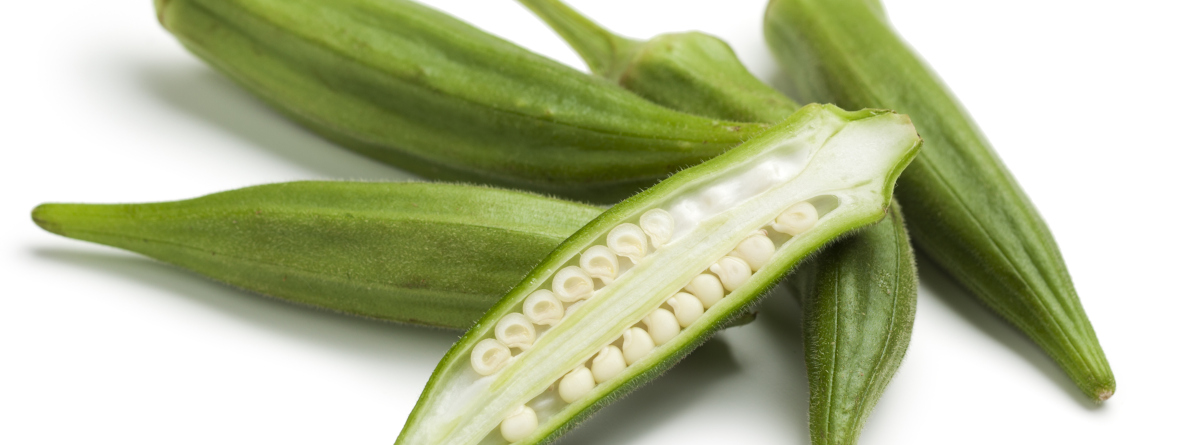
How to select
- Choose okra that is about 2-4 inches long and tender.
- Avoid okra that is too large.
- Fresh okra has a fresh green color; avoid any with brown discoloration.
How to prepare
Rinse okra in a cool stream of water when ready to use.
How to store
- Refrigerate dry, unwashed okra pods in the vegetable crisper loosely wrapped in perforated plastic bags.
- Wet pods will quickly mold and become slimy.
- Okra will only keep for 2-3 days.
- When ridges and tips of pods turn dark, they need to be used immediately.
Peak season
Summer
Ways to use
- Trim ends of okra, coat in oil, and grill for five minutes on each side. Sprinkle with lemon.
- Add to stews and soups. Try making gumbo.
- Boil okra, drain water, and combine with stewed tomatoes, onions, and bell peppers.
- Top your salad or pizza with okra.
Fun facts
- Okra is also known as "lady's fingers" and is part of the hibiscus family.
- Okra is native to Africa but is grown around the world, including the U.S.
- Okra is technically a fruit, but is eaten as a vegetable.
- There are several varieties of okra including burgundy, purple, orange, red, and white.
Nutrition info and facts
Okra is a good source of vitamin C to promote immune health. Okra is a good source of fiber, which aids in digestion. Okra is low in calories, fat, and cholesterol.
1 cup okra = 33 calories, 7 g carbs, 3 g fiber, 82 mg calcium, 57 mg magnesium, 61 mg phosphorus, 299 mg potassium, 23 mg vitamin C
Sources
Almanac. Okra. December 4, 2023.
FoodData Central. Okra, raw. April 2018.
MarthaStewart.com. How to buy, store, and cook okra, an often overlooked (but delicious) vegetable. September 13, 2023.